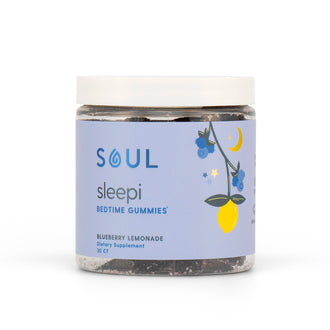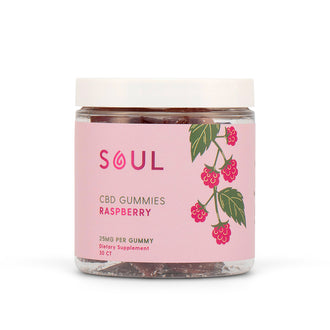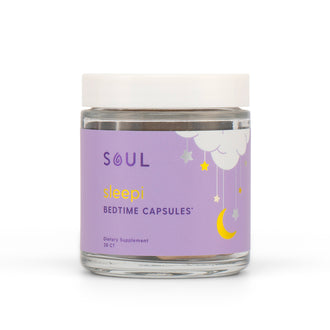Key Takeaways:
- Cannabicitran (CBT) is a rare cannabinoid found in minimal quantities in the cannabis plant. Its specific effects and interactions with the endocannabinoid system are areas of active research.
- There is growing interest in potential CBT benefits, such as anxiolytic and relaxation properties, pain management, neuroprotective effects, impact on appetite and metabolism, and anti-inflammatory actions.
- CBT's legal status is generally covered under cannabis regulations, and it's not scheduled as a controlled substance, but consumers and producers should stay aware of local laws.
The cannabinoid spectrum is vast and complex, with each compound offering unique attributes. Among these, Cannabicitran (CBT) is a lesser-known but intriguing cannabinoid that warrants attention. As the industry and consumers become more sophisticated, there's growing interest in exploring beyond the well-trodden paths of CBD and THC. It's essential to shine a light on CBT to understand its potential role within this diverse landscape.
Transform your wellness journey with Soul – embrace the power of holistic health and elevate your mind, body, and soul. Discover a world of vitality and balance. Join us on the path to well-being. Your well-being awaits – Embrace the Soul experience now!
What Is Cannabicitran (CBT)?
Cannabicitran, or CBT, is a cannabinoid that's found in the cannabis plant, albeit in much smaller quantities compared to its better-known cousins CBD and THC. Due to its trace amounts, it's one of the lesser-discussed constituents in the cannabinoid spectrum, but that doesn't diminish its interest from a scientific or wellness perspective.
Chemical Structure and Origins
CBT's molecular structure is distinct, yet shares commonalities with other cannabinoids that enable it to interact with the body's endocannabinoid system. It's derived from CBGA, the "mother of all cannabinoids," akin to other cannabinoids. Its extraction and isolation, however, require sophisticated techniques due to its low natural abundance.1
Comparison with Other Cannabinoids
Unlike THC, CBT is not known for its psychoactive effects. In fact, much about its interaction with the body's endocannabinoid receptors remains a topic of ongoing research. Compared to CBD, which has become a household name due to its versatility and array of benefits, CBT is on the cusp of gaining similar attention as research unfolds and elucidates its potential uses and benefits.
Unlock the Potential of Rare Cannabinoids with SOULStep into the fascinating world of holistic health with Soul. Discover the lesser-known cannabinoid, CBT, and how it could play a crucial role in fine-tuning your wellness routine.
|
The Science Behind CBT
CBT, like other cannabinoids, interacts with the body's endocannabinoid system, which plays a vital role in regulating various physiological processes. Understanding this interaction is key to harnessing CBT's potential benefits.
How CBT Interacts with the Body
The endocannabinoid system consists of receptors, endogenous cannabinoids, and enzymes that work to maintain bodily homeostasis. CBT's exact mechanisms of action are yet to be fully understood, but it's believed to interact with both CB1 and CB2 receptors, albeit less directly than THC or CBD.
Potential Benefits and Uses
Initial findings suggest that CBT may offer therapeutic value. It's possible benefits to the body are being explored, with a particular interest in its potential role in managing pain, anxiety, and inflammation.2 However, it's critical to note that these are preliminary observations, and more concrete evidence is needed to validate any health claims.
The Benefits of CBT
Exploring the benefits of CBT can help articulate why this cannabinoid should be considered as part of an informed wellness strategy.
Anxiolytic and Relaxation Properties
Initial studies suggest that CBT may have anxiolytic properties, helping to promote relaxation and potentially address anxiety-related concerns.2
Pain Management Potential
Pain management is a common application for cannabinoids, and CBT could offer new approaches for those seeking alternatives to traditional pain relief methods.3

Neuroprotective Effects
CBT may have neuroprotective properties, which could be valuable in the context of neurodegenerative diseases and cognitive health.4
Influence on Appetite and Metabolism
Cannabinoids can affect appetite and metabolism in various ways, and researchers are looking into whether CBT has its own distinctive effects in these areas.5
Anti-Inflammatory Actions
Inflammation is a common target for cannabinoid therapies. CBT may contribute to managing inflammation, offering potential benefits for conditions characterized by inflammatory responses.6
The Legal Status of CBT
The legal landscape surrounding cannabinoids is complex and varies widely depending on geography and specific legislation.
Federal and State Regulations
In regions where cannabis is legal for medicinal or recreational use, CBT is typically included under the same legal framework. However, because it's not as commonly encountered as THC or CBD, specific laws regarding CBT might not be as well-defined.
Implications for Consumers and Suppliers
Consumers interested in exploring CBT should stay informed about their local laws. Suppliers, on the other hand, must navigate the evolving regulatory space as they consider the integration of CBT into their product lines.
How to Use CBT Safely
Recommended Dosages and Methods
Currently, there are no standard dosages for CBT due to the lack of comprehensive studies. As a result, it's critical for consumers to approach CBT with caution, starting with low dosages and adjusting as necessary under the guidance of a healthcare professional.7
Precautions and Potential Interactions
With limited information available on CBT's interactions with medications or health conditions, it's essential to consult with healthcare providers before integrating it into a wellness routine. Caution should especially be exercised where there's potential for interactions with existing treatments.
The Future of CBT
CBT's journey within the cannabinoid spectrum is just beginning, and the future looks promising.
Potential Developments in Research and Products
Increased interest in minor cannabinoids like CBT may drive more scientific discovery and lead to innovative products. As research evolves, we may see CBT emerge as a more prominent player within wellness circles.
What This Means for Consumers
For consumers, this potential uptick in popularity and research means more options for personalized wellness strategies and the exciting possibility of discovering new ways to enhance well-being.
Integrating CBT into Your Wellness Routine
Incorporating cannabinoids into a wellness regimen requires understanding their effects and how they work in conjunction with the body's natural systems.
Synergy with Other Cannabinoids
CBT might be particularly effective when used alongside other cannabinoids, creating a synergistic effect known as the 'entourage effect.' This hints at CBT's potential to complement the actions of other cannabinoids to enhance wellness benefits.
Personalization Tips
Wellness is not one-size-fits-all, and the use of cannabinoids like CBT should be personalized based on individual needs and health goals. Consulting with healthcare professionals and taking a mindful approach to dosages and combinations can help tailor the experience.
Comparing CBT with CBD and THC
Each cannabinoid has its own distinct profile, and CBT is no exception.

The Unique Properties of CBT
Though lesser-known, CBT's unique properties mean it might offer distinct advantages over CBD and THC. As more research becomes available, these differences could highlight the specialized roles that each cannabinoid can play.
What Makes CBT Stand Out
CBT's potential for impacting wellness in ways that differ from CBD and THC makes it a topic of interest for both researchers and consumers. Its unique effects provide an opportunity for CBT to stand out as a valuable component within the cannabinoid spectrum.
CBT's Place in the Full Spectrum of Cannabinoids
Understanding the full roster of cannabinoids offers a more complete view of how they can contribute to health and wellness.
Understanding the Entourage Effect
The entourage effect proposes that cannabinoids can work more effectively together than in isolation. CBT's role within this concept is being explored to better understand how it can contribute to the overall effectiveness of cannabinoid-based wellness solutions.
CBT's Role in Holistic Wellness
CBT might play a significant role in the holistic approach to wellness that many consumers are now adopting. Its potential benefits could be an important piece of the wellness puzzle, particularly for those seeking comprehensive wellbeing solutions.
Final Thoughts on CBT
The exploration of Cannabicitran (CBT) within the burgeoning realm of cannabis research signifies a promising stride toward diversifying the applications of cannabinoids in wellness. While CBT may not yet be as mainstream as CBD or THC, it stands as an emblem of the cannabis plant's intricate and vast potential. The insights gleaned from the studies available suggest that we may only be skimming the surface of what this minor cannabinoid has to offer.
As consumers and researchers alike navigate the complexities of cannabinoids like CBT, it is crucial to maintain a balance between enthusiasm and cautious optimism. With ongoing research likely to unveil more detailed interactions and benefits, CBT could open the door to novel wellness avenues. The convergence of scientific rigor and an openness to emerging compounds like CBT will undoubtedly shape the future of cannabinoid-based therapies and the broader health landscape.
At Soul, we advocate for the influence of choice and the potential advantages of natural alternatives. This is why we provide top-notch hemp products that resonate with the wellness brand philosophy. Whether delving into the realm of CBD or savoring non-alcoholic beverages, we urge you to investigate the possibilities and elevate your lifestyle. Browse our selection now or contact us for assistance in discovering the perfect product for your requirements!
Want to learn more? Check out or latest blogs:
- How Long Does CBD Stay In Your System?
- Effective And Safe Natural Sleep Remedies: Your Ticket To A Restful Night
- Explore The Therapeutic Potential Of Mushroom Gummies
Frequently Asked Questions About CBT
How is CBT extracted from the cannabis plant?
CBT is typically extracted using CO2 extraction, which involves using pressurized carbon dioxide to pull cannabinoids from the cannabis plant.
Is CBT known to be psychoactive?
As of now, it's not clear if CBT is psychoactive. Some sources suggest that its psychoactive effects might be less potent than those of THC, or it may work to modulate or suppress these effects, similar to CBD.
Are there any known side effects associated with CBT consumption?
There is currently no specific information about side effects associated with CBT consumption due to the limited research available on this minor cannabinoid. More studies are needed to understand its safety profile.
Can CBT be used in combination with CBD for therapeutic purposes?
Yes, CBT can be used together with CBD. Both are cannabinoids that are often extracted from CBD-dominant cannabis varieties, and they may have complementary effects when used together.
Does CBT have a potential for addiction or dependency?
There is no evidence to suggest that CBT has any potential for addiction or dependency. This minor cannabinoid is still being researched, but it's not associated with the psychoactive effects that can lead to substance abuse.
What types of cannabis products contain CBT?
CBT might be included in various cannabis products, especially those that are full-spectrum or broad-spectrum, which contain a range of cannabinoids besides CBD and THC.
How does CBT differ from other minor cannabinoids?
CBT has a unique molecular structure and is synthesized differently from other cannabinoids in the plant. It is also found more commonly in hemp, which is high in CBD and low in THC.
Is there a recommended method of consuming CBT to maximize its benefits?
Currently, there is no recommended way to consume CBT, as research into the cannabinoid's use and effects is still in its infancy.
Has the FDA approved any CBT products for medical purposes?
While the FDA has approved CBT methods like EaseVRx for specific uses like chronic pain management, there are no FDA-approved therapeutic products specifically made with the CBT cannabinoid.
Can CBT be synthesized in a laboratory setting, or is it only available from natural cannabis sources?
CBT can be synthesized in a laboratory. This allows researchers to study its properties and potential uses without relying solely on natural extraction from cannabis plants.
Sources:
- InMed Pharmaceuticals. (2022, January 19). InMed Launches Cannabicitran (CBT), Expanding its Rare Cannabinoid Portfolio for the Health and Wellness Sector. Retrieved from https://www.inmedpharma.com/news_release/inmed-launches-cannabicitran-cbt-expanding-its-rare-cannabinoid-portfolio-for-the-health-and-wellness-sector/
- Kaczkurkin, A. N., & Foa, E. B. (2018). Cognitive-behavioral therapy for anxiety disorders: an update on the empirical evidence. Dialogues in Clinical Neuroscience, 17(3), 337–346. ncbi. https://doi.org/10.31887/DCNS.2015.17.3/akaczkurkin
- Mack, A., & Joy, J. (2011). MARIJUANA AND PAIN. Nih.gov; National Academies Press (US). https://www.ncbi.nlm.nih.gov/books/NBK224384/
- Wasim, S., Kukkar, V., Awad, V. M., Sakhamuru, S., & Malik, B. H. (2020). Neuroprotective and Neurodegenerative Aspects of Coffee and Its Active Ingredients in View of Scientific Literature. Cureus. https://doi.org/10.7759/cureus.9578
- Herb. (n.d.). Herb's Guide To CBT: What Is It? What Is It Used For? Retrieved from https://herb.co/guides/what-is-cbt/
- Pinto, J. S., & Martel, F. (2022). Effects of Cannabidiol on Appetite and Body Weight: A Systematic Review. Clinical Drug Investigation. https://doi.org/10.1007/s40261-022-01205-y
- Extract Labs. (n.d.). What is CBT? | Your Guide to Cannabicitran. Retrieved from https://www.extractlabs.com/cbd-guides/what-is-cbt/




